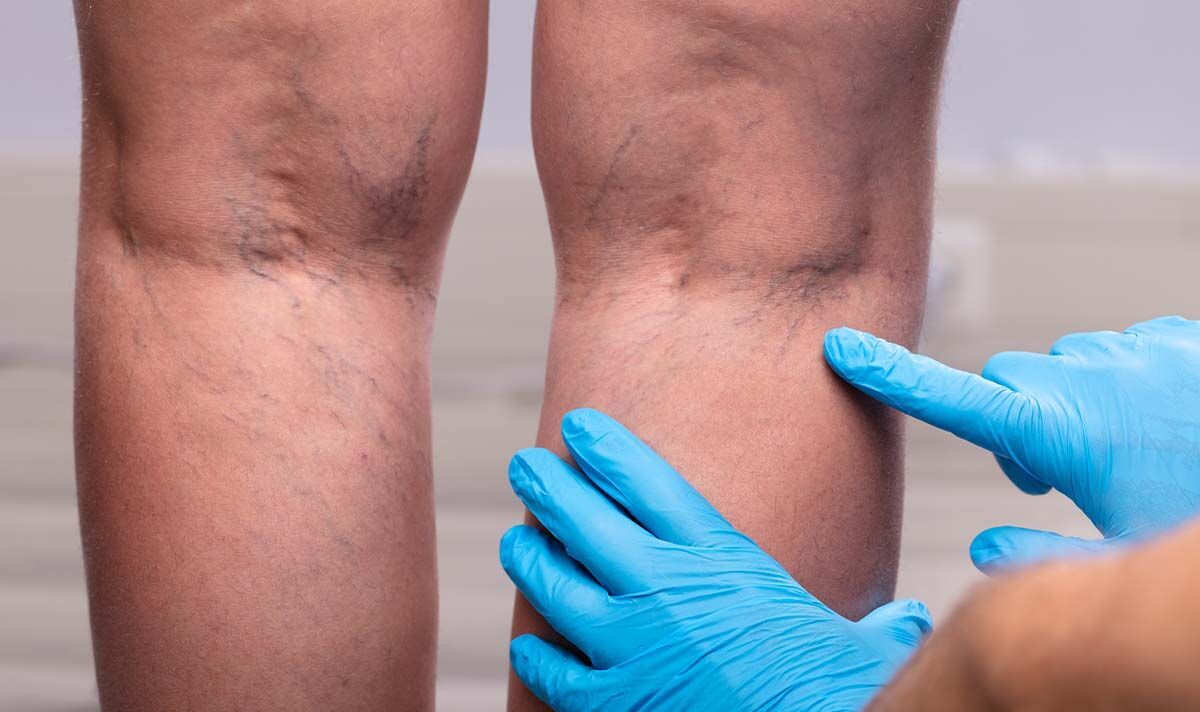British Heart Foundation: Understanding blood clots
We use your sign-up to provide content in ways you’ve consented to and to improve our understanding of you. This may include adverts from us and 3rd parties based on our understanding. You can unsubscribe at any time. More info
Blood clots are a double-edged sword. The gel-like clumps can crop up in response to bleeding and prove useful. But not all clots are to be welcomed. Blood clots that develop in your veins and arteries without good reason can hike your risk of heart attacks and strokes. Worryingly, the outside temperature could play a role in this daunting process, according to an expert.
From unhealthy diet to certain medications, there are various risk factors for harmful blood clots.
However, Professor Mark Whiteley, leading venous surgeon and founder of The Whiteley Clinic, warned that cold weather could also play a role.
Professor Whiteley said: “Sudden changes in temperature, such as when people enter a warm, central-heated building after being out in the cold, can cause thermal stress to the body.
“This means it must work harder to maintain a constant temperature. This thermal stress can have a direct effect on the viscosity of the blood, making it stickier and more likely to clot.”
READ MORE: The colour in your poo that is ‘early sign’ of bowel cancer – seen in 89% of cases

What does research say?
Don’t just take the expert’s word for it as research, published in the journal International Angiology, also warns that lower temperatures seem to be “significantly associated” with deep vein thrombosis (DVT), which describes a medical condition that occurs when a blood clot forms in a deep vein.
The research looked at patients admitted to hospital with DVT in Shenyang, China, during a ten-year period.
The findings showed that low ambient temperature was linked with DVT presentations, with the effects of cold sometimes being delayed up to one week.
While this is just one study highlighting this link, Professor Whiteley shared that certain people with underlying health problems might be particularly at risk.
He said: “For people who have severe atherosclerosis, (hardening of the arteries and cholesterol in the arterial wall), then cold weather can reduce flow to the feet and make symptoms of pain worse.
“For people with abdominal aortic aneurysms – [a bulge or swelling in the main blood vessel that runs from the heart down through the chest and tummy], cold weather and associated reduced atmospheric pressure, increases the risk of them rupturing (bursting).
“Heart attacks can also increase going out into the cold, as the sudden constriction of small arteries increase the resistance and increases the work the heart has to do.”
How to protect yourself
While the cold weather can slow down the rate at which blood is pumped around your body, there are easy tweaks which can help improve your blood circulation in the winter months.
READ MORE: Man, 54, endured left shoulder pain that ‘worsened with movement’ before cancer diagnosis

The expert suggested following a simple exercise plan or wrapping up to minimise your risk of these clots.
Mr Whiteley said: “It is important to stay active in the colder months as this can help improve blood flow and keep people warm.
“Simply wrapping up and going for a brisk walk outside or following at-home workout plans can help boost mood as well as improve circulation.
“Yoga is a low-impact exercise which is particularly good at improving circulation. The bending, twisting and stretching movements involved in the practice help to compress and decompress the blood vessels, which can help boost circulation.”

What are the warning signs of blood clots?
While symptoms of blood clots can differ depending on the location where the gel-like clumps have formed, the expert shared the main symptoms to be aware of.
Mr Whiteley said: “If you are suffering from a blood clot in your arms or legs, you may experience swelling, pain, and tenderness, as well as redness and warmth above where the clot is positioned.
“Blood clots in the abdomen can cause serious stomach pain, diarrhoea, and vomiting, whereas a clot in the heart may cause breathing problems, pain and heaviness in the chest, sweating, nausea, and dizziness.
“If someone has developed a blood clot in their lungs, they may cough up blood, suffer from a racing heart, shortness of breath, sharp chest pain and a fever. Contrastingly, for blood clots in the brain, the main symptoms include headache, dizziness, weakness in your face, arms and legs as well as difficulty talking and seeing correctly.
“Because the symptoms of a clot can differ so much, it is vital that people go to see a specialist if they are concerned.”
Source: Read Full Article
